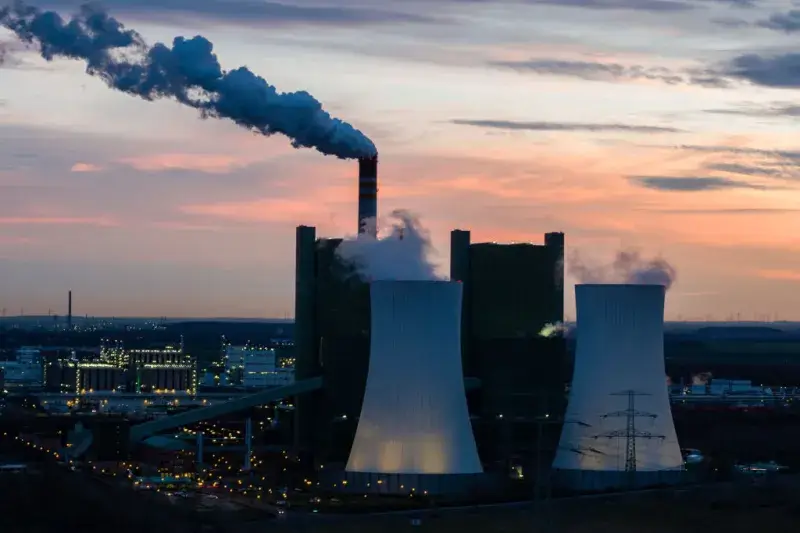Why It’s So Hard to Put a Price on Carbon

In the past decade, the phrase “put a price on carbon” has gathered steam around the globe. And carbon pricing has been hailed by scientists, economists, and business leaders as one of the most cost-effective tools to decarbonize economies. But the exact price—typically expressed in terms of value (e.g. dollars or other local currency) per metric ton of carbon dioxide equivalent—varies, depending on the jurisdiction, the policies in place, and the pricing instrument. In other words, this is not a one-price-fits-all situation.
Governments choose their instrument of choice based on their unique needs, but each pricing instrument has its advantages. The two most common examples of direct carbon pricing are carbon taxes and Emissions Trading Systems (ETS), which puts a cap on the allowed amount of greenhouse gas emissions per jurisdiction and lets market forces determine the price. In these cases, the polluter pays proportionally for emissions produced, and these tools are used to incentivize emissions reductions.
Dozens Dead, Toll Climbing in Johannesburg After Fire Burns Building Settled by Homeless Dozens Dead, Toll Climbing in Johannesburg After Fire Burns Building Settled by Homeless
Watch More
The third main instrument is a crediting mechanism, which issues “credits” to eligible projects that demonstrate real, permanent reductions in greenhouse gasses. These credits can be purchased to offset emissions. Unlike a carbon tax or ETS, carbon credits require an external source of demand to establish value. But carbon crediting has an advantage in situations where barriers (e.g. legal hurdles or political resistance) prevent a carbon tax or ETS from being implemented.
By incorporating climate change costs into economic decision-making, carbon pricing can help support changes in production, consumption, and investment patterns, says Joseph Pryor, senior climate change specialist at the World Bank. This strategy reinforces low-carbon growth—making it more expensive to pollute and more rewarding to reduce pollution—which is critical for hitting the goal of net-zero emissions by 2050 in order to achieve the Paris Agreement target of limiting global warming to “well below” 2 degrees Celsius above pre-industrial levels.
Paying the Price
As of October 2022, there are 68 direct carbon pricing initiatives implemented in 46 national jurisdictions around the world. The World Bank dashboard highlights jurisdictions with carbon tax or ETS initiatives in place or pending, including Argentina, China, and the European Union. Currently, the U.S. doesn’t have a carbon tax on the national level, despite being one of the biggest CO2 emitters in the world. But several states—such as California, Oregon, and Massachusetts—have launched their own carbon pricing schemes in the past decade.
There is also indirect carbon pricing, which means changes in the price of carbon come from sources not directly proportional to emissions. The two most common examples would be fuel taxes and the removal of fossil fuel subsidies, which reduce the cost of producing coal, oil, or gas, or cut fuel prices for the end user. Eliminating fossil fuel subsidies would reduce global greenhouse emissions between 6.4% and 8.2% by 2050, according to the International Institute for Sustainable Development. By itself, this is not enough to hit the Paris Agreement targets, but fuel subsidy reform represents another tool in the climate action arsenal.
All that said, putting a price on carbon is complicated. Arguments against carbon pricing include the potential negative impact on carbon-intensive industries and how it frames climate change as a market failure instead of a fundamental system problem. Other critics call a carbon tax regressive because rising prices in high-income countries hurt poorer people in those countries relatively more than richer ones. (Recent research suggests it’s not that cut and dry.)
Where Credit’s Due
Unlike a carbon tax or ETS, crediting mechanisms do not adopt the “polluter pays principle.” A carbon credit is a tradeable unit, typically representing a metric ton of carbon dioxide equivalent. Instead of placing a cost on emissions, carbon crediting rewards emissions reductions or removals. The credit price varies depending on the features of the project where the credit came from. What type of project is it? Renewable energy? Nature-based? Where is it located? What year did the project launch?
According to Mark Carney, U.N. Special Envoy on Climate Action and Finance, carbon credits play a complementary role to direct and indirect carbon pricing in reaching net-zero. The offsets can potentially generate $100 billion-plus a year, he says, flowing to developing economies for reforestation, renewable power, and other low-carbon projects. Most carbon credits generated this way are traded in voluntary carbon markets, as opposed to compliance markets, where the government has more input through carbon taxes and emission trading schemes.
Right now, the market for carbon credits is wide and diverse, driven by the needs of buyers. Critics of voluntary market carbon credits point to the fact that the market is unregulated and opaque. A number of initiatives have emerged to promote integrity in these markets, including the Integrity Council for the Voluntary Carbon Market, the Voluntary Carbon Market Initiative, and Carbon Credit Quality Initiative. Integrity matters because registry documents from project developers can be five years old, in which time forests can burn or be cut down. Also, most carbon registries currently rely on manual measurements locally, which can lead to errors, so carbon buyers may not know the most accurate and up-to-date status of a project, says Tom Duncan, CEO of Earthbanc, the world’s first continuously audited carbon and finance platform.
Duncan’s Stockholm-based startup, founded in 2019 and backed by the European Space Agency, aims to solve the inaccuracy problem by leveraging machine learning and satellite remote sensing. The AI-powered technology allows Earthbanc to audit projects (primarily land restoration), and the company gives each project a rating, publishing that data every year. Projects that pass the Earthbanc audit, achieving better outcomes than their claims, get an A rating. About 20% of the Earthbanc audits have an F rating, Duncan says, adding that carbon buyers will not be shown these defective projects. Carbon buyers rely on these audits to avoid credits with climate claims that might be inaccurate, not credible, or out of date.
“They want to know: Are the trees still there?” Duncan says. “Have the trees been cut or burned? Is the land flooded? Our satellite imagery with remote sensing and machine learning auditing tells us exactly how much carbon is in the landscape, and we can compare that to the carbon credit claims.”
This year, Earthbanc partnered with the United Nations Convention to Combat Desertification to launch carbon pre-purchase agreements to finance carbon credits, marketed as sustainable land bonds. Earthbanc works with carbon project developers, NGOs, and farmers to pre-sell a portion of their projects to help finance them in advance. This would not only pay farmers to plant and protect trees, Duncan says, but also support impacted communities through future carbon revenue streams.
“This is part of climate justice,” Duncan says. “As carbon prices increase, people most vulnerable to climate change deserve that compensation to enable them to adapt to a changing climate and ensure they have food and water security.”
Buying Power
Historically, most information about sustainable projects were kept hidden away in a document, inaccessible except through a broker. But with Web3—a new iteration of the internet which incorporates concepts such as decentralized apps and blockchain technology—entrepreneurs like Duncan seek to bring green projects out of their dated silos and into the digital light.
This is the mission for the core team behind Klima DAO (decentralized autonomous organization), which created the KLIMA token in 2021 to drive climate action by boosting demand for carbon credits. Built on the Polygon network by a pseudo-anonymous team, Klima DAO can’t exactly control pricing because carbon has a flexible supply. Every KLIMA token is backed by at least 1 metric ton of carbon.
The idea is that by eliminating brokers, anybody can now have buying power and direct access to project developers through the liquidity, transparency, and reduced fragmentation of blockchain technology. Boosting demand in this way can, in theory, raise carbon credit prices, and higher prices may incentivize corporations to find other ways to mitigate emissions rather than compensate for them.
“When you spend some time in the carbon market, you realize it is not dominated by an environmentalist, it’s a business,” says Klima DAO’s co-founder, who goes by the name 0xymoron. “A lot of money is made from the carbon market, but it’s been relatively inefficient in achieving its objectives to close the emissions gap.”
Most in the industry would agree carbon credits should not be used as a “get out of jail free card,” 0xymoron says, highlighting a well-established order of operations that should dictate decarbonizing strategies: No 1. avoid emission; two, reduce emissions; and three, compensate for unavoidable emissions. “Similar to the ‘reduce, reuse, recycle’ idea for reducing the impact of waste,” 0xymoron says.
Read the full article on Time









